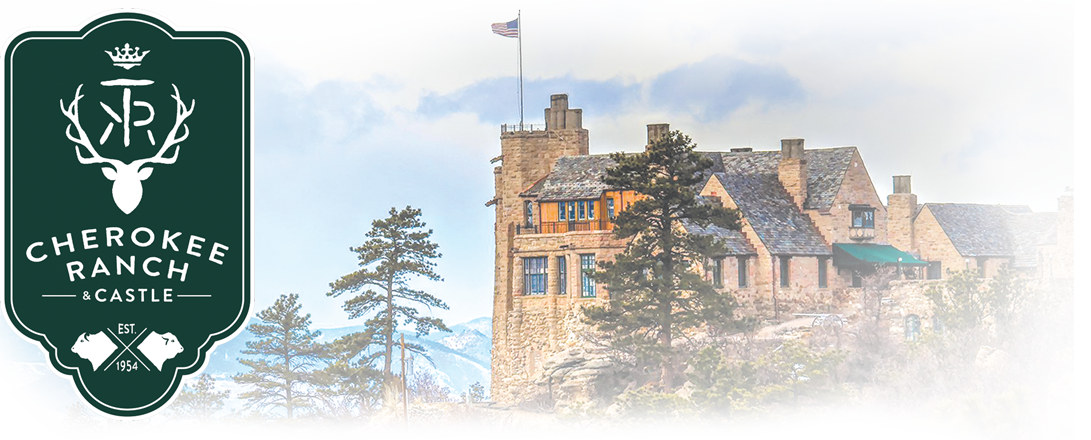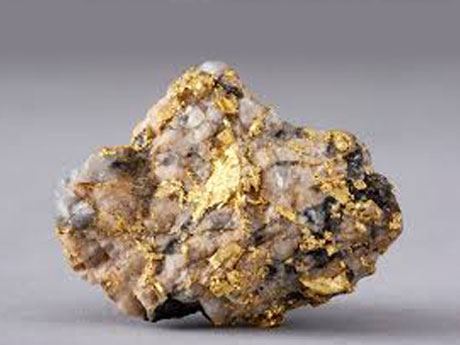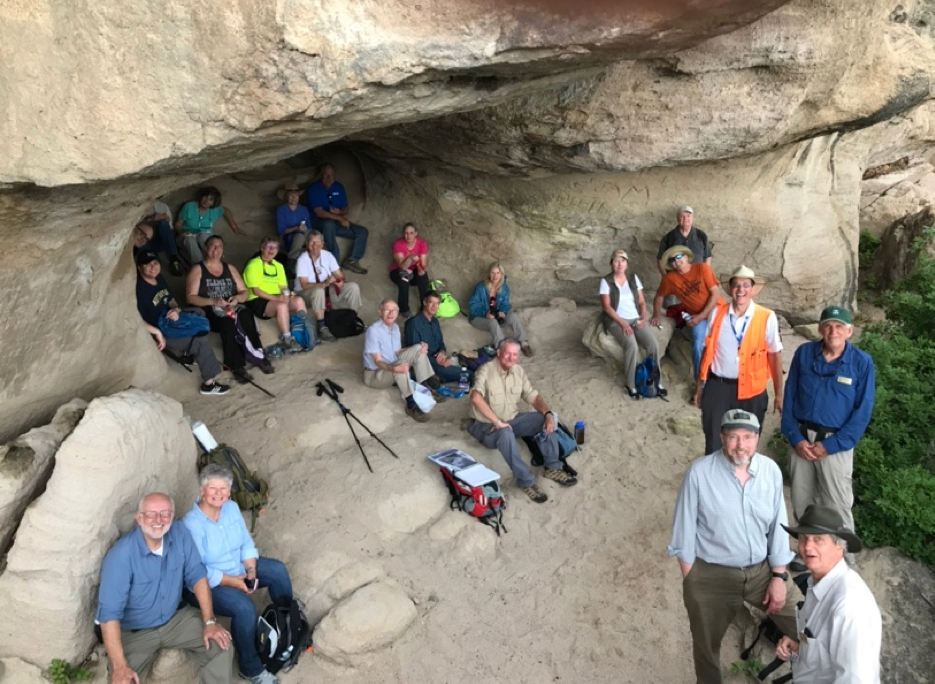
Cherokee Ranch Science Institute (CRSI)
Founded in 2013 by the late Al Koch, the Cherokee Ranch Science Institute (CRSI) continues to serve the mission of the Cherokee Ranch and Castle Foundation (CRCF) by educating the public and performing scientific research projects on the ranch. Over the last decade the CRSI has accumulated a significant amount of information about the geology, archaeology and paleontology of the 3,400-acre ranch. Working in collaboration with various scientists, the members of the institute have published several professional papers sharing their findings and research with the greater scientific community.
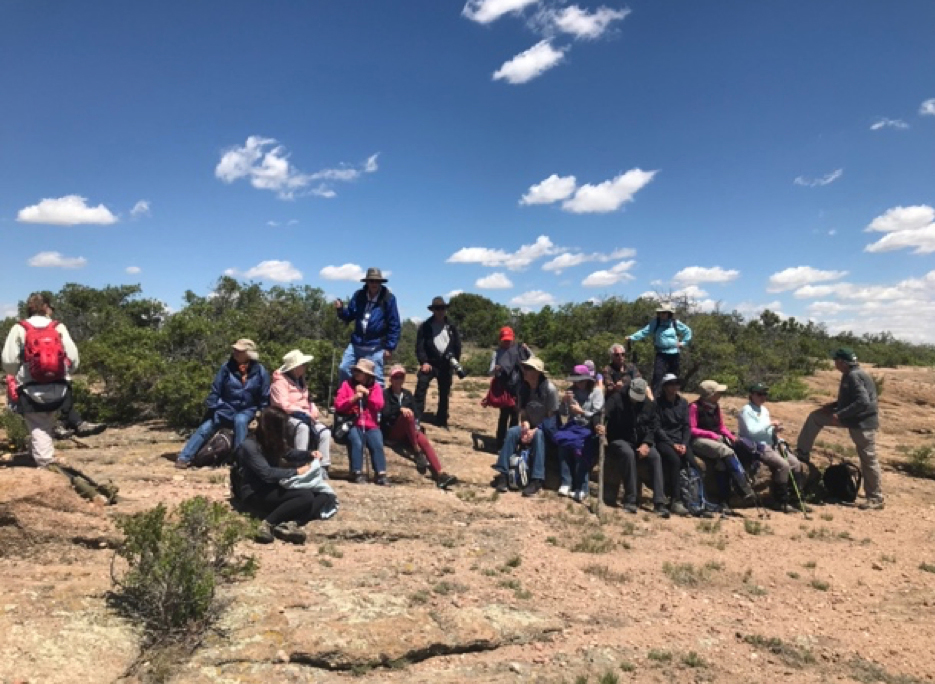
Science Institute Guided Hikes
Each summer the Science Institute presents guided hikes to various sites on Cherokee Ranch. These hikes are designed to share some of what we have learned about the ranch with the public. Check the “Events” tab on this website to see the schedule of this year’s hikes in Geology, Archaeology and Petrified Wood.
Discovery Series Lectures
Periodically the members of the CRSI present lectures on a variety of topics. These presentations primarily focus on the research here at the ranch but also cover other scientific information related to the ranch and accompanying 14,000 acres of open space.
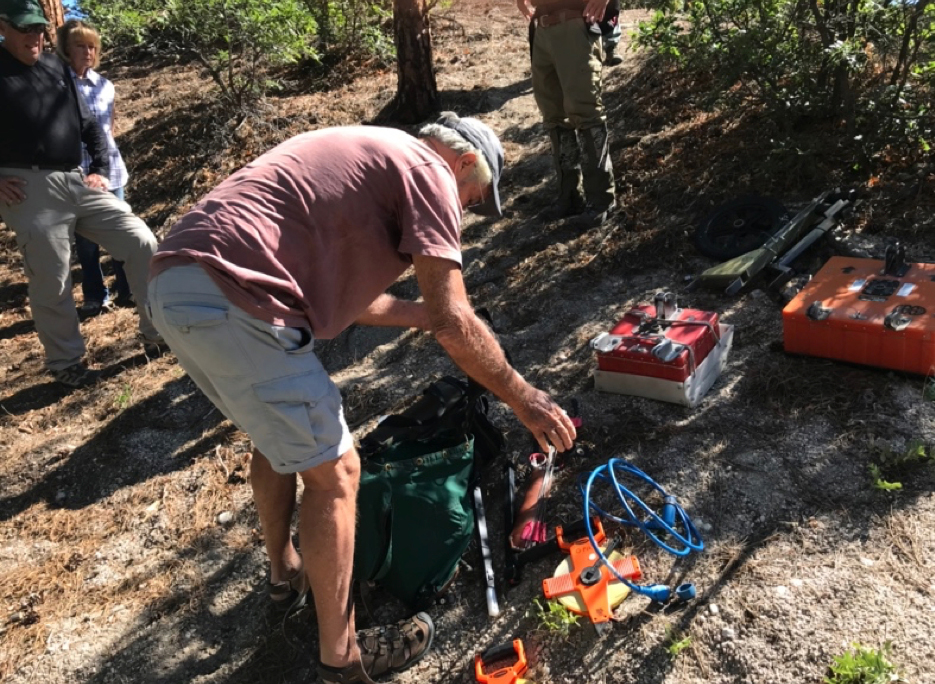
Ongoing Research Projects
Ground Penetrating Radar Surveys
This year Mike Kolb established a wonderful collaboration with Dr. Larry Conyers of Denver University. Larry is an expert in the field of ground penetrating radar (GPR) and has written numerous professional papers and books on the subject. He has done research all over the world, mostly in subsurface archaeology. Larry visited the ranch in early summer and took an interest in the petrified wood deposits. He was particularly interested in seeing if GPR could be used to find petrified logs below the surface where they had been previously discovered.
In July, Larry brought his portable GPR equipment to the ranch, and with the help of several dedicated outdoor volunteers from the ranch, we did a small survey of the area around sample #10 “Display Stump”. The survey showed that GPR could be used to identify petrified wood samples below the surface. The results were encouraging but Larry pointed out the challenges of using GPR in the petrified forest. The steep topography, coupled with dense vegetation, makes it difficult to survey most areas where the logs are found.
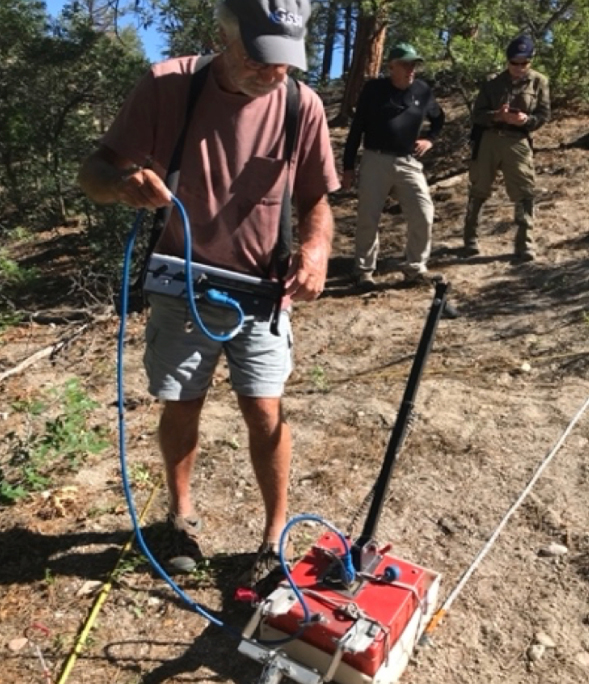
Dr. Conyers prepares the GPR antenna for the survey. In the fall, Dr. Conyers returned to the ranch to perform a GPR survey at one of our archaeology sites on Cherokee Mountain. Reid Farmer has directed the excavation of this site for the last seven years. Larry brought a team of students from Denver University to perform a GPR survey of the site. The data gathered will help the field camp direct their excavations next summer.
Pictures from the Cherokee Mountain excavation site.
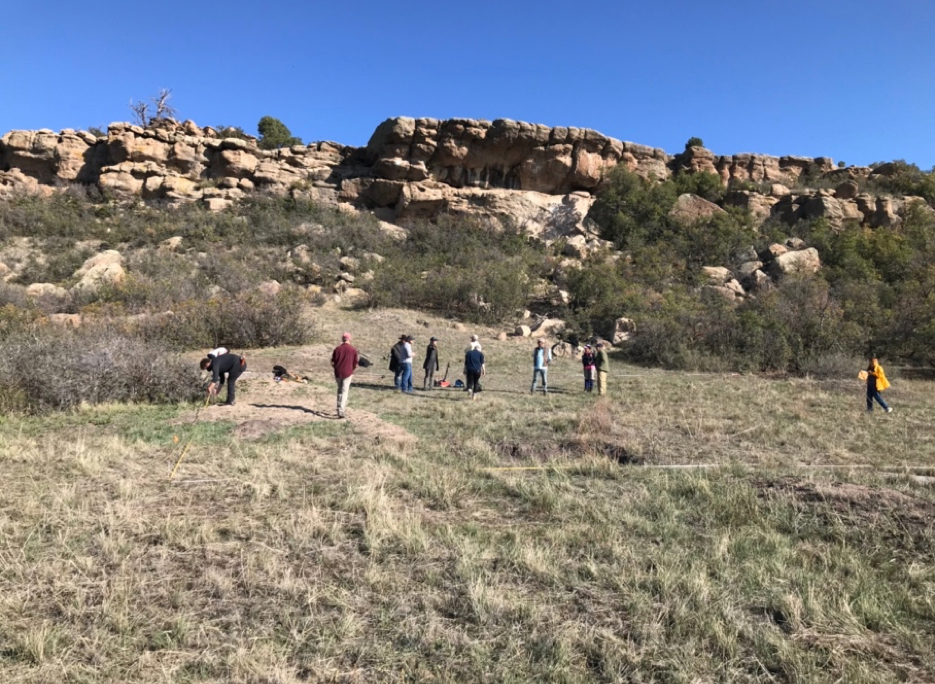
Setting up the grid for the radar survey.
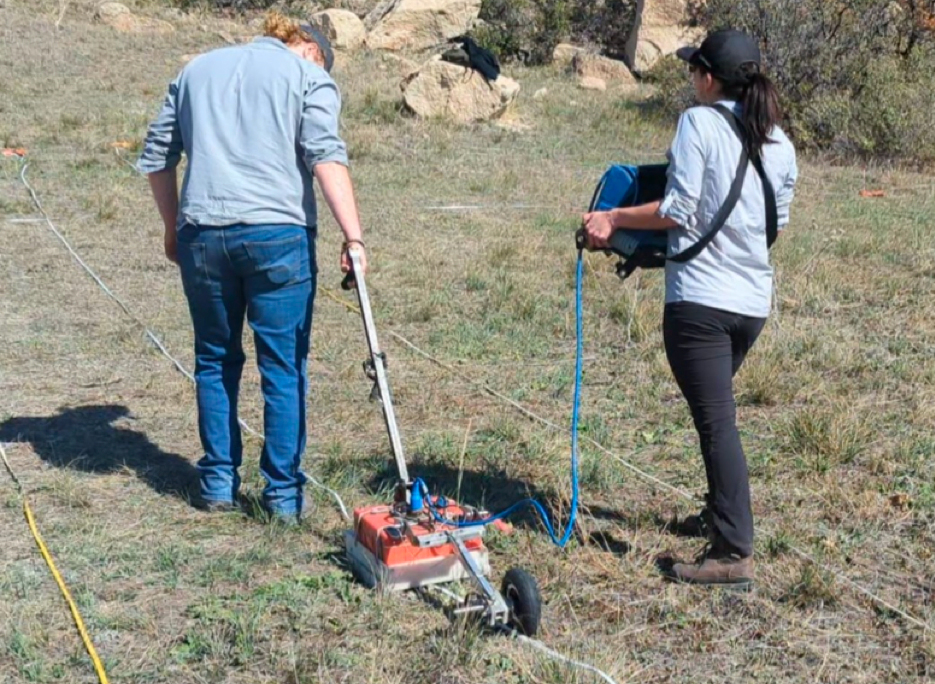
Students from Denver University collecting GPR data. The orange antenna slides over the surface, transmitting high frequency radar waves into the ground. As the waves penetrate the ground, they reflect back to the receiver, identifying objects below the surface.
The CRSI is thankful to Dr. Conyers and his students at Denver University for their generous gift of time and scientific knowledge.
Metropolitan State University Archaeology Field Camp
In June, the Metropolitan State University Archaeology Field Camp was working on the ranch. Over several weeks the students continued the archaeological survey of the ranch and excavated at the Cherokee Mountain site near the rock shelter. The survey was centered on the Northwest corner of the property. During “survey” the students systematically examine the surface for artifacts. This year they recovered two archaic-aged projectile points that are over two thousand years old.
After the survey the group continued work on the excavation site on Cherokee Mountain near the rock shelter. This year the focus was on an area around a previously discovered “cooking feature”. Students who attend the field camp learn how to plan excavations and analyze and record the recovered artifacts.
Ponderosa Pine Survey
In the spring of 2023, John McKinney is planning a field assessment of our ponderosa pine forests on the ranch. Recent drought, coupled with invasive insects, has caused a significant impact in the 1,500 acres of dense forest on the property. You will notice groups of trees dying very suddenly as they are infected.
The plan is to map the trees that have died and are still standing. This will give us some idea of the scope of this problem and how quickly it is changing the Ponderosa forests of the ranch.
History of CRSI
In the early part of this century, a retired geologist, Allan Koch, asked to do some research on the promontory bluffs that punctuate the ranch. Al was doing an in-depth study of the Castle Rock Conglomerate, a local rock formation found in Douglas County. As he surveyed the property over several years, he created a detailed map of the various sedimentary layers that make up the ranch. Along with mapping the bedrock geology, Al developed an interest in the fossils and petrified wood found on the property. By 2013 he proposed the creation of the CRSI to serve the mission of Tweet Kimble by learning more about the ranch and sharing this information with scientists and the public.
Al provided professional geology tours on the property which ultimately led to the educational hikes we offer today. He also solicited the help of many scientists to support the research efforts of the institute. He organized the Discovery Series lectures and served as the director of the institute until his death in 2019.
Peter Brown and John McKinney created the Cherokee Ranch Nature Camp in 2005. As they hiked the property over several years, they discovered large deposits of petrified wood.
Peter and John met Al around 2010, and he was interested in the petrified wood and the sandy layers of sediment where the wood was discovered. Tom Machalski, a local expert in petrified wood, joined the research effort at this time. Tom had a deep understanding of Colorado geology and the various deposits of petrified wood in the Denver area. Over the next five years Peter, Tom and John collected samples and mapped the petrified wood sites on the ranch. Over the years the significance of the Cherokee Petrified Forest has become clear. We have discovered a unique species of extinct laurel trees in the well-preserved logs found on the ranch.
In 2015 Reid Farmer joined the institute to study the archaeological history of the ranch. Reid toured the area around the Cherokee Mountain Rock Shelter with Al Koch and was interested in the artifacts that had been discovered on the mountain. The following summer Reid contacted Jon Kent from Metro State University, and they held the first archaeology field camp at the ranch. Students have been visiting the ranch each summer since then and are presently completing a survey of the entire property looking for evidence of past human occupation. Reid and his students have discovered several archaeological sites on our property and a unique rhyolite tool quarry.
Research Publications
- Allan J. Koch et al., 2018, Provenance of the upper Eocene Castle Rock Conglomerate, south Denver Basin, Colorado, U.S.A. in Rocky Mtn. Geology, v. 53, no.1, p.29-43.
- George E. Mustoe and Mike Viney, Mineralogy of Paleocene Petrified Wood from Cherokee Ranch Fossil Forest, Central Colorado, USA, in Geosciences, 2017, 7, 23.
- Elisabeth Wheeler, Peter K. Brown, More Paleocene Woods of the Denver Basin, Cherokee Ranch, Colorado. (Spring, 2019).
- Please contact John McKinney at jmckteacher@gmail.com for copies of these articles or other information related to the ongoing research at the ranch.
Our Members
Peter Brown, B.A. – Paleontology / Petrified Wood Peter lives in N. Carolina but did the major research on the petrified forest. His work with Dr. Wheeler yielded a 2019 professional paper outlining the various extinct trees discovered in the petrified forest. Peter was also instrumental in the development of the outdoor educational hiking program.
Reid Farmer, B.A. / M.A. – Archaeology Reid lives in Parker and has led the modern archaeological research effort at Cherokee. Reid has studied archaeology in various locations across the Western U.S. He has worked with Dr. Jon Kent in organizing the Metropolitan State University Archaeology Field Camp. They have published several papers outlining the various archaeological discoveries at Cherokee Ranch.
Mike Kolb, B.S. / M.A. / Ph.D. - Archaeology Mike is the newest member of our team. Mike has had long career studying archaeology in the Eastern Mediterranean and Pacific Islands. He recently relocated to Denver and joined the faculty of Metropolitan State University. Mike has replaced Jon Kent as the Archaeology Field Camp leader for Metro State.
Tom Machalski, B.S. - Geology Tom joined the institute in 2014. After a long career at the USGS core lab in Lakewood, Tom has become a leading expert in petrified wood along the Front Range of Colorado. Tom led the research effort to identify several different varieties of trees in our forest. He also played a key role in the collaboration with other scientists who study petrified wood.
John McKinney, B.S. / M.A.- Science Education / Petrified Wood John has been working at the ranch for over 18 years. His principal role today is directing the outdoor education programs for the Science Institute. John has mapped the petrified wood sites on the property and continues to promote the work of the institute by sharing information with the public in several guided hikes each year.

Dr. Allan Koch B.S / M.S. / Ph.D. (In Memorium) Al founded the CRSI and set extremely high standards for the scientific explorations of the ranch. His dedication to the mission of the Cherokee Ranch and Castle Foundation continues today through our on-going research and educational programs. All of us in the institute miss Al but know he would be happy to see his work continue here at the ranch.
Collaborating Scientists
- Donna Anderson, Colorado School of Mines
- Drew Coleman, University of North Carolina
- Larry Conyers, University of Denver
- Magdalena Kascak, GIS Specialist, Colorado
- Jon Kent, Metropolitan State University of Denver
- Ian Miller, Denver Museum of Nature and Science
- George Mustoe, Western Washington University
- Bob Raynolds, Denver Museum of Nature and Science
- Elisabeth Wheeler, North Carolina State University
CRSI is grateful for extensive support from Whiting Petroleum Corporation and the Denver Museum of Nature and Science.
Bluebird Nest Box Project
Jill Freeman, Director
Within Cherokee Ranch’s purpose as a sanctuary for native wildlife and migratory birds, a quiet but important program thrives. The Bluebird Next Box Project was established in 1998 by foundation founder, Tweet Kimball. Her right-hand-person Jill Freeman was engaged and active since the project’s inception. Continuing for these twenty years with Freeman’s oversight (becoming project chair in 2000), Cherokee Ranch currently hosts six trails with 225 nest boxes, multiple bat boxes, houses for wren, owl, kestrel and more. The program conserves and protects migrating cavity nesting birds, particularly bluebirds through surveying, inventorying, cleaning, repairing, modifying and replacing nest boxes.
The Cherokee Ranch Bluebird Nest Project is now the largest, most productive and most progressive private or public property nest box trail in Colorado. Highly trained and knowledgeable, tireless volunteers work under Ms. Freeman’s direction to collect data and protect these habitats with its practices viewed as state-of-the-art and cutting edge for citizen science technology.
All data collected is reported both locally and nationally. The project is affiliated with the Audubon Society of Greater Denver, Colorado Bluebird Project, North American Bluebird Society and Cornell Lab of Ornithology.
